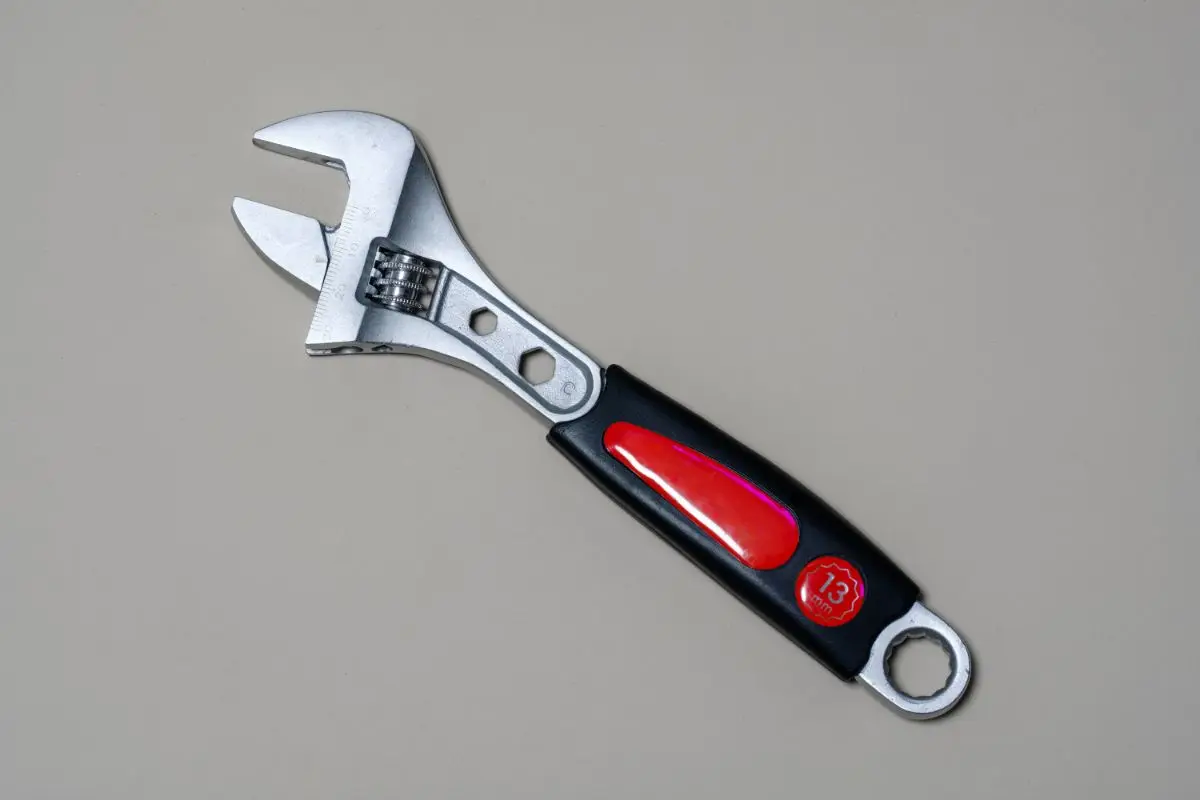Woodworking aficionados regard the coping saw as an indispensable tool, revered for its versatility and precision in handling intricate cuts. From crafting delicate curves to shaping intricate patterns, learning how to use the coping saw is ideal for offering unrivaled control and maneuverability.
The coping saw’s thin, flexible blade can cut complex curves and shapes with ease, so it’s perfect for various woodworking tasks. Additionally, it is relatively easy to use, even for beginners.
In this article, we will explore the coping saw, delving into the functions of its key components, the proper techniques for using the coping saw, and the diverse applications of the coping saw, showcasing its ability to handle a variety of woodworking projects.
Table of contents
- What Are The Parts of the Coping Saw?
- What Is The Step-By-Step Guide To Using A Coping Saw?
- Do I Push or Pull the Coping Saw?
- What Are Coping Saw Safety Tips?
- What Are The Advantages And Disadvantages Of Different Coping Saw Blade Materials?
- What Are Some Tips For Making Smooth Coping Saw Cuts?
- How Do I Tension A Coping Saw Blade?
- What Are The Coping Saw Frames?
- How Do I Choose the Right Frame?
- How Do I Choose The Right Coping Saw For My Needs?
- What Are The Budget Considerations In Getting A Coping Saw?
- How Do I Maintain My Coping Saw?
- FAQs
- Conclusion
- References
- Recommendations
What Are The Parts of the Coping Saw?
The coping saw, a member of the handsaw family, comprises three primary components: the frame, the blade, and the handle. The frame, typically constructed from metal or plastic, provides the structural support for the blade. The blade, the heart of the saw, features a series of fine teeth, meticulously designed to tackle delicate cuts and curves. The handle, ergonomically designed for comfort and control, allows for precise guidance and maneuverability.
Read Also: How To Sell Used Clothes Online: Best Places And How To Make Profit
What Is The Step-By-Step Guide To Using A Coping Saw?
Here is a step-by- step guide for you:
- Secure the workpiece firmly in a vise or clamp, ensuring it’s stable and immovable during cutting.
- Mark the desired cutting line on the workpiece using a pencil or marker.
- Position the coping saw blade perpendicular to the cutting line, ensuring the teeth are aligned correctly.
- Grip the handle firmly with your dominant hand, ensuring your thumb rests on the top of the handle for added control.
- Position your non-dominant hand near the blade’s base, providing additional support and stability.
- Maintain a relaxed posture with your elbows slightly bent, allowing for fluid and controlled movements.
- Apply gentle pressure and start sawing, maintaining a steady and controlled motion.
- Rotate the workpiece as needed to follow the cutting line effectively.
- Once the cut is complete, smooth out any rough edges using sandpaper.
Do I Push or Pull the Coping Saw?
Unlike traditional handsaws, the coping saw can be operated using both pushing and pulling strokes. Pushing strokes are primarily used for straight or slightly curved cuts, while pulling strokes offer greater control for intricate curves and shapes.
Advanced Techniques
- Internal Cuts: To create internal cuts, drill a pilot hole at the starting point and insert the coping saw blade.
- Curved Cuts: For tight curves, pivot the saw frame while maintaining blade contact with the workpiece.
- Compound Cuts: To achieve compound cuts, combine sawing motions with tilting the frame.
What Are Coping Saw Safety Tips?
Coping saws, while versatile and effective tools, require proper safety precautions to prevent injuries and ensure safe operation. Here are some essential coping saw safety tips to keep in mind:
- Eye Protection: Always wear safety glasses or goggles to protect your eyes from flying debris, splinters, and sawdust.
- Secure Workpiece: Firmly clamp or secure the workpiece to a stable surface to prevent it from moving or shifting during cutting. This ensures control and minimizes the risk of blade deflection.
- Proper Grip: Maintain a firm, controlled grip on the coping saw handle with your dominant hand. Place your non-dominant hand near the blade base for additional support and stability.
- Clear Cutting Area: Ensure the cutting area is free from clutter and obstructions to avoid tripping or bumping into objects.
- Proper Blade Tension: Properly tension the coping saw blade to avoid blade breakage and ensure smooth, controlled cutting.
- Avoid Excessive Pressure: Apply gentle, consistent pressure on the saw throughout the cutting motion. Excessive pressure can cause the blade to bind or break.
- Straight or Slightly Curved Cuts: Use a coping saw with a closed frame and a coarse-toothed blade for straight or slightly curved cuts.
- Intricate Cuts: Use a coping saw with an open frame and a fine-toothed blade for intricate cuts, tight curves, and internal cutouts.
- Blade Maintenance: Regularly clean and lubricate the coping saw blade to prevent rust and ensure optimal performance. Replace worn or damaged blades promptly.
- Store Properly: Store the coping saw with a blade guard to protect the teeth and prevent accidental injuries.
What Are The Advantages And Disadvantages Of Different Coping Saw Blade Materials?
Coping saw blades are available in various materials, each offering distinct advantages and catering to specific cutting applications. Here’s a comprehensive overview of the advantages and disadvantages of different coping saw blade materials:
High-Carbon Steel Blades

Advantages:
- Durability: High-carbon steel blades are renowned for their exceptional durability, making them suitable for a wide range of woodworking tasks.
- Affordability: These blades are generally more affordable than other options, making them a cost-effective choice for occasional use or beginners.
Disadvantages:
- Brittleness: High-carbon steel blades can be brittle and prone to snapping if subjected to excessive pressure or stress.
- Susceptibility to Rust: These blades can rust if not properly maintained, requiring regular cleaning and lubrication.
Carbon Steel Blades
Advantages:
- Flexibility: Carbon steel blades offer a balance of flexibility and strength, making them versatile for various cutting applications.
- Strength: These blades are stronger than high-carbon steel blades, making them suitable for tougher materials.
Disadvantages:
- Susceptibility to Rust: Like high-carbon steel blades, carbon steel blades can rust if not properly maintained.
Stainless Steel Blades

Advantages:
- Corrosion Resistance: Stainless steel blades are highly resistant to corrosion, making them ideal for cutting wet materials or use in humid environments.
- Durability: These blades are durable and can withstand demanding cutting tasks.
Disadvantages:
- Cost: Stainless steel blades are typically more expensive than high-carbon steel or carbon steel blades.
- Hardness: These blades are harder than high-carbon steel or carbon steel blades, which can make them more difficult to sharpen.
Bi-Metal Blades

Advantages:
- Strength and Flexibility: Bi-metal blades combine the strength of high-carbon steel with the flexibility of carbon steel, resulting in a versatile blade that handles a wide range of cutting tasks effectively.
- Durability: These blades are durable and can withstand demanding cutting tasks.
Disadvantages:
- Cost: Bi-metal blades are typically more expensive than high-carbon steel or carbon steel blades.
- Sharpening: These blades may require more frequent sharpening due to their combination of materials.
See also: How to Make Homemade Dog Repellent
What Are Some Tips For Making Smooth Coping Saw Cuts?
Achieving smooth coping saw cuts requires a combination of proper technique, tool maintenance, and material selection. Here are some valuable tips to elevate your coping saw skills and produce consistently smooth cuts:
- Mark the Cutting Line with Precision
Before commencing the cut, clearly mark the desired cutting line using a sharp pencil or marker. A well-defined cutting line serves as a visual guide for accurate sawing.
- Secure the Workpiece
Firmly clamp the workpiece to a stable surface to prevent it from moving or shifting during cutting. This ensures precise control and minimizes the risk of blade deflection.
- Maintain a Steady Hand
Avoid jerky or sudden movements while sawing. Maintain a steady, controlled hand motion to ensure smooth, consistent cuts.
- Apply Consistent Pressure
Exert gentle, consistent pressure on the saw throughout the cutting motion. Avoid applying excessive pressure, as this can cause the blade to bind or break.
- Utilize Proper Blade Tension
Ensure the coping saw blade is properly tensioned. A taut blade provides stability and control, while an overly tight blade can snap, and an under-tensioned blade can wobble and produce rough cuts.
- Consider Blade Selection
Choose the appropriate blade for the material you are cutting. Fine-toothed blades are ideal for delicate materials and intricate cuts, while coarser-toothed blades are suitable for thicker materials and straight cuts.
- Lubrication for Smooth Cutting
Apply a light lubricant, such as WD-40, to the blade to reduce friction and prevent binding. This promotes smoother, more effortless cuts.
8. Regular Blade Maintenance
Keep the blades sharp and clean to maintain optimal performance. Wipe down the blades after each use to remove debris and prevent rust. Replace worn or damaged blades promptly.
How Do I Tension A Coping Saw Blade?
Tensioning a coping saw blade is a crucial step in ensuring smooth, controlled cutting and preventing blade breakage. Here’s a step-by-step guide on how to tension a coping saw blade:
Gather the Necessary Tools:
Coping saw with a blade tension screw
Flathead screwdriver or coin
Loosen the Blade Tension Screw:
Locate the blade tension screw on the coping saw frame. This screw typically has a flathead design and is situated near the blade attachment point.
Insert the Blade:
Slide the blade into the coping saw frame, ensuring the teeth are facing in the correct direction. The blade should fit snugly without excessive play.
Tighten the Blade Tension Screw:
Using the flathead screwdriver or coin, gently turn the blade tension screw clockwise to tighten the blade. Avoid overtightening, as this can cause the blade to snap.
Check for Proper Tension:
Pluck the blade gently to assess its tension. The blade should produce a clear, ringing sound when plucked. If the sound is dull or muted, tighten the screw slightly. If the sound is excessively high-pitched, loosen the screw slightly.
Make Test Cuts:
Perform a few test cuts on scrap material to ensure the blade is properly tensioned. The blade should cut smoothly and without excessive vibration.
Adjust Tension as Needed:
Fine-tune the blade tension as needed based on the cutting performance. Over time, the blade tension may loosen due to use, so check and adjust it periodically.
Remember, proper blade tension is essential for optimal coping saw performance and safety. A taut blade provides stability, control, and prevents blade breakage.
What Are The Coping Saw Frames?
Coping saw frames, the backbone of these versatile tools, come in two primary configurations: open frames and closed frames. Each design offers distinct advantages and caters to specific woodworking applications.
Open-Frame Coping Saws

Open-frame coping saws, characterized by their U-shaped design, provide exceptional flexibility and maneuverability. The open frame allows for unobstructed access to the workpiece, making them ideal for intricate cuts, tight curves, and internal cutouts. This design is particularly favored for delicate woodworking projects, such as crafting jewelry, model making, and ornamental pieces.
Closed-Frame Coping Saws

Closed-frame coping saws, featuring a rectangular or box-shaped frame, offer enhanced rigidity and support. The enclosed frame provides greater stability, minimizing blade deflection and ensuring precise, controlled cuts. This design is particularly well-suited for straight or slightly curved cuts, especially when working with thicker or harder materials.
How Do I Choose the Right Frame?
The choice between an open-frame and closed-frame coping saw depends on the specific cutting task at hand. For intricate cuts and maneuverability, open frames reign supreme. For precision and stability in straight or slightly curved cuts, closed frames are the preferred choice.
Blade Materials
The coping saw blade, the heart of the cutting action, is available in various materials, each offering distinct advantages and catering to specific cutting applications.
High-Carbon Steel Blades
High-carbon steel blades are renowned for their durability and affordability, making them a popular choice for general woodworking tasks. Their hardened steel construction provides sufficient strength for tackling a wide range of materials.
Carbon Steel Blades
Carbon steel blades offer a balance of flexibility and strength, making them versatile for various cutting applications. They are slightly softer than high-carbon steel blades, providing greater flexibility for curved cuts while retaining adequate strength for straight cuts.
Stainless Steel Blades
Stainless steel blades excel in environments where corrosion resistance is crucial. Their non-reactive nature makes them suitable for cutting wet materials, such as plastics or soft metals, without the risk of rust or degradation.
Bi-Metal Blades
Bi-metal blades, a fusion of high-carbon steel and carbon steel, offer the best of both worlds. They combine the toughness and durability of high-carbon steel with the flexibility of carbon steel, resulting in a versatile blade that handles a wide range of cutting tasks effectively.
Blade Tension
Blade tension plays a pivotal role in performance. Proper blade tension ensures smooth, accurate cuts while minimizing blade wobble and breakage. To achieve the desired tension, rotate the blade tension screw until the blade is taut but not overly tight.
How Do I Choose The Right Coping Saw For My Needs?
Here are factors to consider when getting a coping saw:
For Delicate Woodworking
For delicate woodworking projects, such as crafting jewelry, model making, or intricate ornamental pieces, a closed-frame coping saw with a 12-14 TPI blade is recommended. The closed frame provides enhanced stability and precision, while the fine-toothed blade enables smooth, controlled cuts in delicate materials.
For Straight or Slightly Curved Cuts
When straight or slightly curved cuts are the primary focus, a closed-frame coping saw with an 8-10 TPI blade is the ideal choice. The closed frame offers rigidity for precise cuts, while the 8-10 TPI blade provides the right balance of strength and flexibility for these types of cuts.
For Harder Materials
When cutting harder materials, such as hardwood or dense plastics, a coping saw with a high-carbon steel or bi-metal blade is essential. These blades offer the strength and durability required to tackle tougher materials without compromising cutting precision.
For Curved Cuts and Tight Spaces
For intricate curved cuts and work in tight spaces, an open-frame with a 12-14 TPI blade is the go-to choice. The open frame provides the flexibility and maneuverability needed for tight corners and curves, while the fine-toothed blade ensures smooth, controlled cuts.
For Wet Material Cutting
When cutting wet materials, such as plastics or soft metals, a coping saw with a stainless steel blade is the preferred choice. The non-reactive nature of stainless steel prevents corrosion and ensures the blade’s integrity in wet environments.
What Are The Budget Considerations In Getting A Coping Saw?
Coping saws come in a variety of price ranges, from affordable options for occasional use to high-end professional models. The price typically depends on the quality of the materials, the craftsmanship, and the brand.
Budget-Friendly Options for Occasional Use
For occasional use or beginner woodworkers, a mid-range coping saw with a decent blade is often sufficient. These saws typically cost between $10 and $20. They may not have the same level of durability or precision as high-end models, but they are still capable of producing satisfactory results for most woodworking projects.
Higher-Quality Options for Frequent Use or Demanding Projects
If you plan to use your coping saw frequently or for demanding projects, it is worth investing in a higher-quality model. These saws typically cost between $30 and $50. They are made from more durable materials, have better craftsmanship, and often come with features such as comfortable handles and adjustable blade tension.
Read Also: Best Bathroom Stalls for schools
How Do I Maintain My Coping Saw?
Proper maintenance is crucial for extending the lifespan of your coping saw and ensuring optimal performance. Here are some essential maintenance tips:
1. Clean the Blade: After each use, wipe down the blade with a clean cloth to remove debris and prevent rust.
2. Lubricate the Blade: Apply a light coat of lubricant, such as WD-40, to the blade to reduce friction and prevent binding.
3. Store the Saw Properly: Store the saw with a blade guard to protect the teeth from damage and prevent accidental injuries.
4. Inspect the Blade Regularly: Check the blade for signs of wear or damage, such as bent or broken teeth. Replace the blade if necessary.
By following these maintenance guidelines, you can keep your coping saw in top condition and enjoy years of reliable, precise cutting.
FAQs
While both saws excel at intricate cuts, coping saws offer greater portability, while scroll saws provide more precision and controlled cutting.
Avoid excessive pressure and maintain proper blade tension. Additionally, use a blade appropriate for the material being cut.
Coping saws are suitable for cutting wood, plastic, and soft metals.
Regularly clean and lubricate the blade to prevent rust and ensure smooth operation.
Beyond woodworking, coping saws can be used for crafting jewelry, model making, and other DIY projects.
Conclusion
The coping saw, a seemingly simple tool, harbors a wealth of capabilities, offering precision, versatility, and ease of use. By mastering its intricacies, woodworkers can unlock a world of creative possibilities, transforming raw materials into works of art. As you embark on your coping saw journey, embrace the challenges, savor the satisfaction of each precise cut, and elevate your woodworking skills to new heights.
References
- bhg.com – How to Use a Coping Saw
- home.howstuffworks.com – How to Use a Coping Saw





